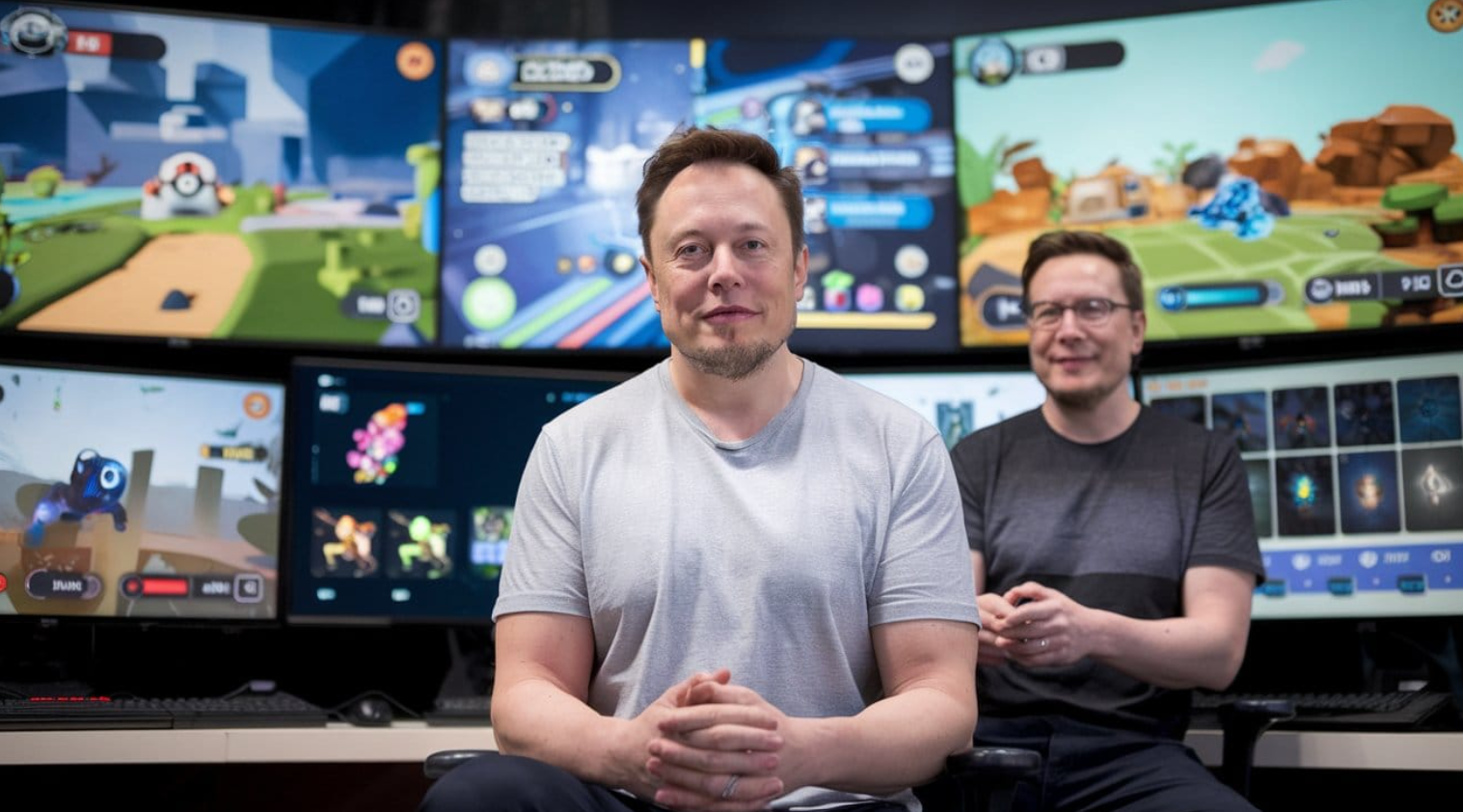Elon Musk has set his sights on AI gaming. His artificial intelligence startup, xAI, is making a serious push into game creation, and it starts with teaching its AI chatbot Grok how to build games from scratch. The company is now hiring a “Video Games Tutor” to guide Grok in game design, mechanics, and content creation.
In a statement made on Monday, Musk said xAI will launch a “great AI-generated game before the end of next year.” This shows a clear goal to turn Grok into a tool that can help design and create video games using artificial intelligence. Musk’s move comes at a time when more builders are looking to AI to speed up and reshape the way games are made.
xAI’s Job Posting Gives a Glimpse Into Its AI Gaming Plans
xAI’s job listing for the “Video Games Tutor” offers between $45 and $100 per hour. That’s above the average pay for US game developers, who make about $52 per hour based on a yearly salary of $116,250. This makes the position attractive to those who want to shape the next generation of AI-powered game tools.
“As an AI tutor specialized in video games,” the job posting says, “you will contribute to xAI’s mission by training and refining Grok to excel in video game concepts, mechanics, and generation.” The job will “directly impact Grok’s capabilities in producing engaging, fun, innovative video games.”
The tutor will use xAI’s tools to label and test game elements. This includes mechanics, story, design, and player experience. The work involves close teamwork with engineers to improve Grok’s outputs and make the process more efficient. It’s a hands-on role that mixes gameplay analysis, critique, and creative input.
What the Role Requires
The ideal candidate must have a strong background in game design, computer science, or interactive media. They also need experience with indie game making and a portfolio of work. The tutor must show good judgment in what makes a game fun and playable, and have the ability to test and improve Grok’s game outputs.
Other key skills include the ability to give clear feedback on what works and what doesn’t in a game, referencing modern tools and trends to support training. Strong communication is also a must. The person must be able to explain ideas clearly to engineers and help shape how Grok learns to design games.
The job is open to people based in the US or working remotely, with a few exceptions. The first 2 weeks of training require set hours, but after that, hours are based on the worker’s time zone.
Musk’s Broader Push Into AI Gaming
This is not the first time Musk has hinted at gaming plans for xAI. Back in November, he brought up the idea of starting a game studio linked to the AI company. The current move to hire a tutor shows that the idea is now becoming real.
Musk has been vocal about the role AI will play in games. He recently said the impact will be “massive.” That future may be coming faster than expected. A new survey from Google Cloud and Harris Poll shows that 87% of game developers already use AI agents that adapt to players in real time.
These tools can speed up development and make games more flexible. But they also raise questions about what might be lost. Some builders worry that too much AI use could lead to fewer creative risks and less variety in game design.
A Growing Market for AI in Games
The push for AI in games is not just hype. A report from Dimension Market Research shows that the AI-in-game-development market is set to grow from $3.2 billion in 2025 to nearly $58.8 billion by 2035. That’s a sharp increase and shows how much money and interest are moving into the space.
As more AI systems get trained to build content, companies like xAI are trying to position themselves at the center of this change. Grok, if trained well, could become part of a new toolkit for game developers who want to make things faster, cheaper, or at larger scale.
But the question is whether game makers will trust Grok enough to use it.
Grok’s Recent History Could Impact Adoption
Grok has already faced a few high-profile problems. In July, it caused controversy with a “MechaHitler” meltdown. Then in August, it was linked to NSFW content. One notable example involved deepfake nude images of Taylor Swift. These cases raised alarms about how Grok handles sensitive topics and user prompts.
This history could shape how developers view Grok when it comes to game design. Building a fun game is one thing. Making sure it’s safe, respectful, and free of harmful content is another. For Grok to be used widely, xAI may need to show that the system can be trusted to create without crossing lines.
Not Just AAA: AI Is Gaining Ground in Web3 Gaming Too
While xAI’s plans are not linked to blockchain or web3 gaming, the overlap between AI and blockchain games is growing. Some games in the web3 space are already using AI in creative ways.
One example is AI Arena, a side-scrolling, one-on-one fighting game. In it, players train their AI agents by stepping into different scenarios and modeling behavior for the bot to copy. Players can tweak training settings to guide the AI’s learning. After enough training, they put their fighter to the test in online battles. If it performs poorly, they can go back and refine the training.
Another is Parallel Colony, where players manage AI characters trying to survive in a harsh world. Each AI-controlled character even has a crypto wallet. These wallets are used to trade and barter in-game, adding a layer of economic depth and player strategy.
Both of these games (and more to come) show how AI is already shaping web3 experiences. It’s not just about faster content creation. It’s about giving players new roles: as trainers, managers, or strategists for AI-driven game agents.


Leave a Reply